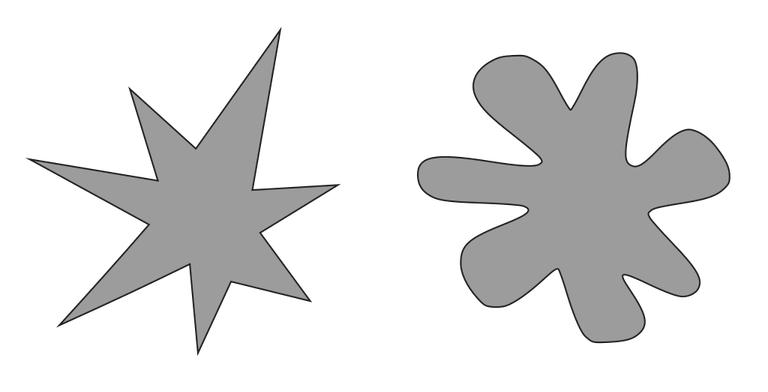
The psychological effect known as the bouba/kiki effect is a non-arbitrary mapping among speech sounds and the visual shape of objects. German-American psychologist Wolfgang Köhler first studied this effect in 1929. In psychological experiments first carried out on the island of Tenerife, Köhler showed forms similar to those shown on the picture above and asked participants which shape was called "takete" and which was named baluba" ("maluma" in the 1947 version). Nevertheless not explicitly stated, Köhler, implies that there was a strong preference to match the rough shape with "takete" and the rounded shape with "baluba".
In the study held in 2001 by Vilayanur S. Ramachandran and Edward Hubbard repeated Köhler's research but this time using the words "kiki" and "bouba". They asked American college undergraduates and Tamil speakers in India "Which of these shapes is bouba and which is kiki?" In both groups, 95% - 98% linked the curvy shape with"bouba" and the irregular one to "kiki", implying that the human brain anyhow connects abstract definitions to the shapes and sounds in a way. Research by Daphne Maurer and her colleagues reveals that even children as young as two years old may show this effect as well.
The effect has also been confirmed to appear when the words to be matched are existing first names. A study showed that individuals would pair names such as "Molly" with round shapes, and names such as "Kate" with sharp contours. Furthermore, people would correlate various character attributes with either group of names (for instance, easygoingness with "round names"; determination with "sharp names"). This may indicate a role of abstract concepts in effect.
Ramachandran and Hubbard advise that the kiki/bouba effect has connotations to the development of language because it implies that the naming of objects is not entirely arbitrary. The curved shape may most usually be titled "bouba" because the mouth makes a more rounded shape to pronounce that sound while a more rigid, angular mouth shape is required to make the sound "kiki."